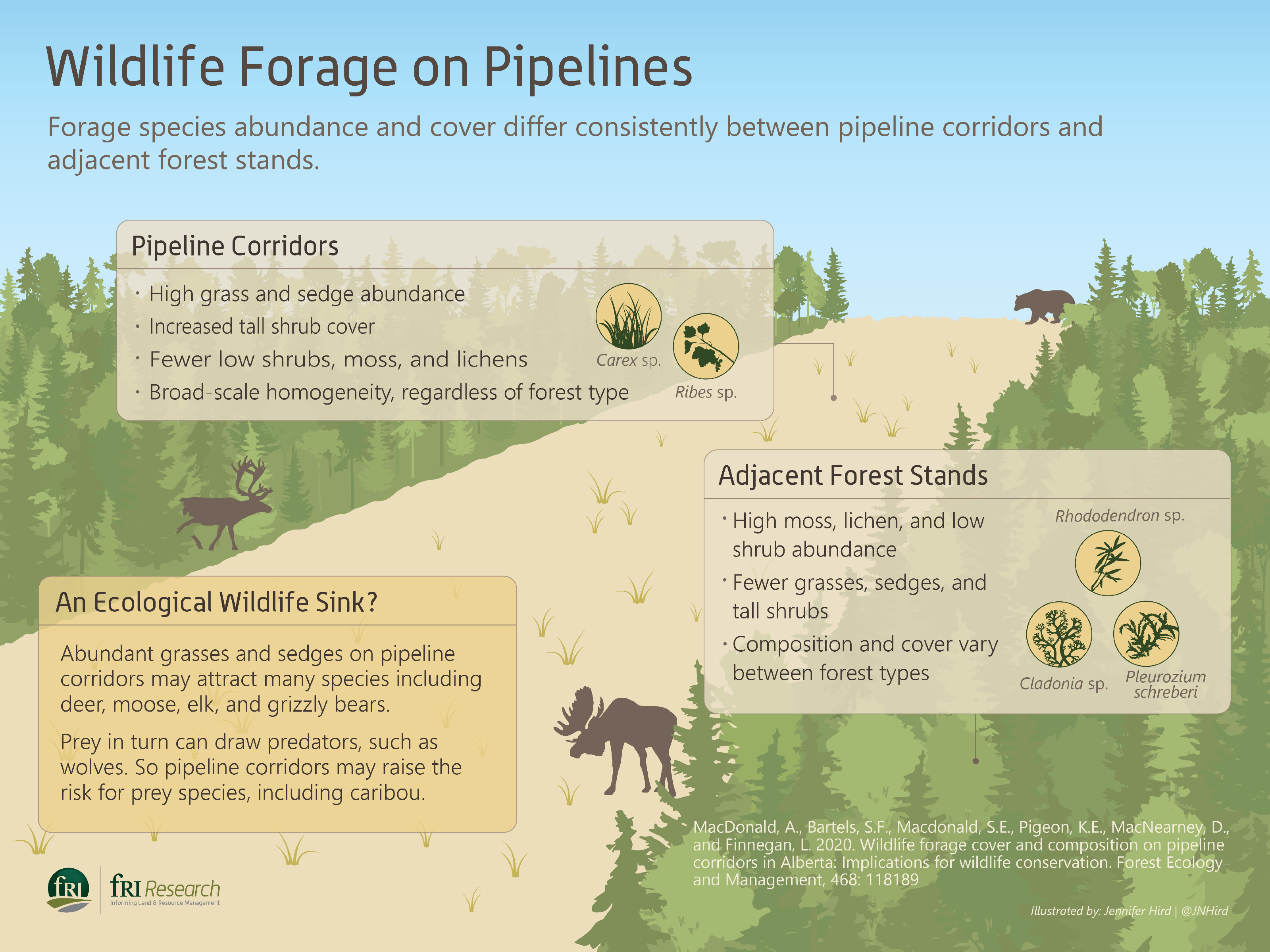This resource is available on an external database and may require a paid subscription to access it. It is included on the CCLM to support our goal of capturing and sharing the breadth of all available knowledge pertaining to Boreal Caribou, Wetlands, and Land Management.
The construction of pipeline rights-of-way (ROWs, hereafter ‘pipeline’) involves mechanical site clearing, which impacts soil and ground cover vegetation and has implications for forage availability and predation risk for threatened wildlife, including woodland caribou (Rangifer tarandus) and grizzly bear (Ursus arctos). However, there has been no quantitative evaluation of vegetation communities on open pipelines as compared to the adjacent intact forest. We compared the cover of ground vegetation by vegetation type, and the cover and composition for plant taxa known for their importance as woodland caribou and grizzly bear forage, between plots located on pipeline corridors, near the edge of the pipeline corridor, and in the adjacent undisturbed forest across six different boreal forest ecosite types in west-central and north-western Alberta, Canada. Pipeline corridors were characterized by higher total ground vegetation cover, and cover of low shrubs, lichens, bryophyte and of targeted forage species of low shrubs, bryophytes, and lichens. In contrast, pipelines had higher graminoid cover and cover of target forage species of tall shrubs and graminoids, as compared to adjacent forest. Despite the substantive differences in cover and composition of ground vegetation among the ecosite types, differences between pipelines and the adjacent forest were quite consistent, with a few exceptions. For instance, forb cover was higher in the adjacent forest compared with pipelines in shrubby ecosite types, but was similar across plot locations in other ecosites. Species composition also varied among ecosites and differed between the adjacent forest and on pipelines; with pipelines dominated by graminoids, particularly Carex species. Our results demonstrate that pipelines influence ground vegetation communities, and cover and composition of wildlife forage species, across the boreal forest landscapes of Alberta; we suggest this results in pipelines being a potential ecological sink for wildlife populations, including threatened caribou. To ensure pipelines can recover, restoration strategies that promote natural recovery or purposeful re-planting may be required to accelerate forest re-establishment and put inactive pipeline corridors within caribou ranges on a recovery trajectory. Our results suggest that ecosites can be used to prioritize pipelines where restoration or management actions may be the most beneficial.
Find a quick notes summary of this research on the fRI Research site here.
The full resolution graphical abstract for this work, shown below, can be found here.


